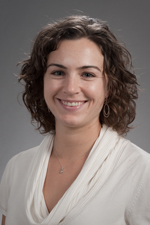
Jessica Telleria
Dr. Jessica Telleria was recently interviewed in "Orthopaedics Today", the article and interview focus on how "Traction weight is greatest risk factor of related sciantic nerve dysfuntion during hip arthroscopy".
Read the full article below or click here to see it in Orthopaedics Today.
--- Interview from Orthopaedics Today ---
Traction weight is greatest risk factor of related sciatic nerve dysfunction during hip arthroscopy
Hip arthroscopy has emerged as a helpful diagnostic and therapeutic tool in the evaluation and treatment of a spectrum of pathological conditions in and around the hip. There is a definite learning curve to acquiring the expertise for this treatment modality, and an important consideration in this process is minimizing complications. Minimizing risk factors involves positioning and the maximum traction weight that can be used without placing the sciatic nerve at risk for dysfunction following hip arthroscopy.
I have asked Jessica J.M. Telleria, MD, to share insights she and her co-authors have gained from their study about this issue.
Douglas W. Jackson, MD
Chief Medical Editor
Douglas W. Jackson, MD: Realizing there is a learning curve for hip arthroscopy, what is the incidence of nerve injury (transient and permanent) that has been reported with use of the lateral or supine positions?

The pudendal and sciatic nerves are the most commonly involved, and damage to the lateral femoral cutaneous nerve has been reported as well. While most are transient neuropraxias, resolving within a few weeks, permanent nerve damage has been reported with potentially devastating consequences to the patient.
The reported rate of damage to the nerves about the hip ranges from 0% to 27%. Aggregating across 30 studies suggests that the overall reported incidence of nerve injury is 1.7% and comprises up to 52.8% of all complications during hip arthroscopy. While the authors are unaware of any study designed to directly compare differences in nerve injury between the lateral and supine positions, the ratio of pudendal to sciatic nerve injury reported in the literature is approximately 1:3 in the lateral position, and 2:1 in the supine position. Presumably damage to the pudendal nerve is most often due to direct compression from the perineal post, whereas sciatic nerve injury is related to the longitudinal pull on the limb while in skeletal traction.
Jackson: What methodology did you use to study the possible effects of the amount of traction and the duration of traction in influencing possible nerve injury?
When the EMG indicated nerve dysfunction, the surgeon was immediately notified, followed by reevaluation of the vital signs, depth of anesthesia, patient position and technical troubleshooting. Traction time and weight were continuously monitored with a custom footplate tensiometer built into the traction device. Following data collection routine statistical analysis was performed by a dedicated statistician.
